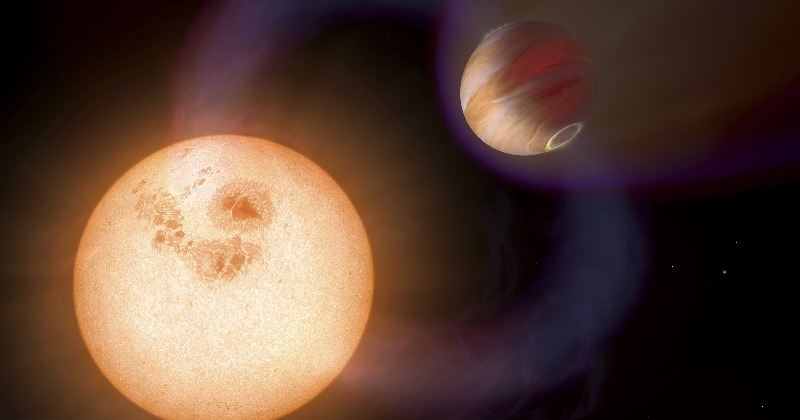
Scientists have found a ‘Super Earth’ believed to orbit one of the oldest stars in the Milky Way. The exoplanet gets its title because it is believed to be three times the mass of Earth, 50% larger than our home planet.
The planet, known as TOI-561b, has been described in a new study accepted for publication in The Astronomical Journal. Despite the planet’s mass, its density is about the same as Earth’s, astronomers found in the study.
“We report the discovery of TOI-561, a multi-planet system in the galactic thick disk containing a rocky planet with an ultrashort period (USP),” the study notes.
The planet gets its name from the planet-hunting Transiting Exoplanet Survey Satellite (TESS) mission conducted by NASA in 2018. The “TOI” in TOI-561b stands for TESS Object of Interest. It is located outside the solar system, in the thick galactic disk of the Milky Way, a report from CNN explains. Due to the proximity of the host star, it only takes less than half a day from Earth to orbit around it.
“Every day you are on Earth, this planet orbits its star twice,” Stephen Kane, co-author and astrophysicist at the University of California, Riverside, said in a statement. The researchers determined the planet’s mass, radius and density using the WM Keck Observatory in Hawaii.

(Representative Image: Reuters)
This proximity to the “super-Earth” results in the planet’s average surface temperature being over 2,000 Kelvin or 3,140 degrees Fahrenheit. TOI-561b is therefore too warm to be habitable. Although astronomers know that the rocky planet and its star form a 10-billion-year-old system, they wonder if the planet ever knew life.
“TOI-561b is one of the oldest rocky planets discovered to date,” lead author Lauren Weiss said in a statement. “Its existence shows that the universe has formed rocky planets almost since its inception 14 billion years ago.” In comparison, our sun is only 4.5 billion years old.
Such older planets appear to be less dense than the more recently formed planets. This is because there weren’t that many heavy elements in the universe at the time. Such elements were ultimately created by stars that ended in a supernova.
The study highlights two other planets orbiting the star, both of which are likely gaseous and larger than TOI-561b.